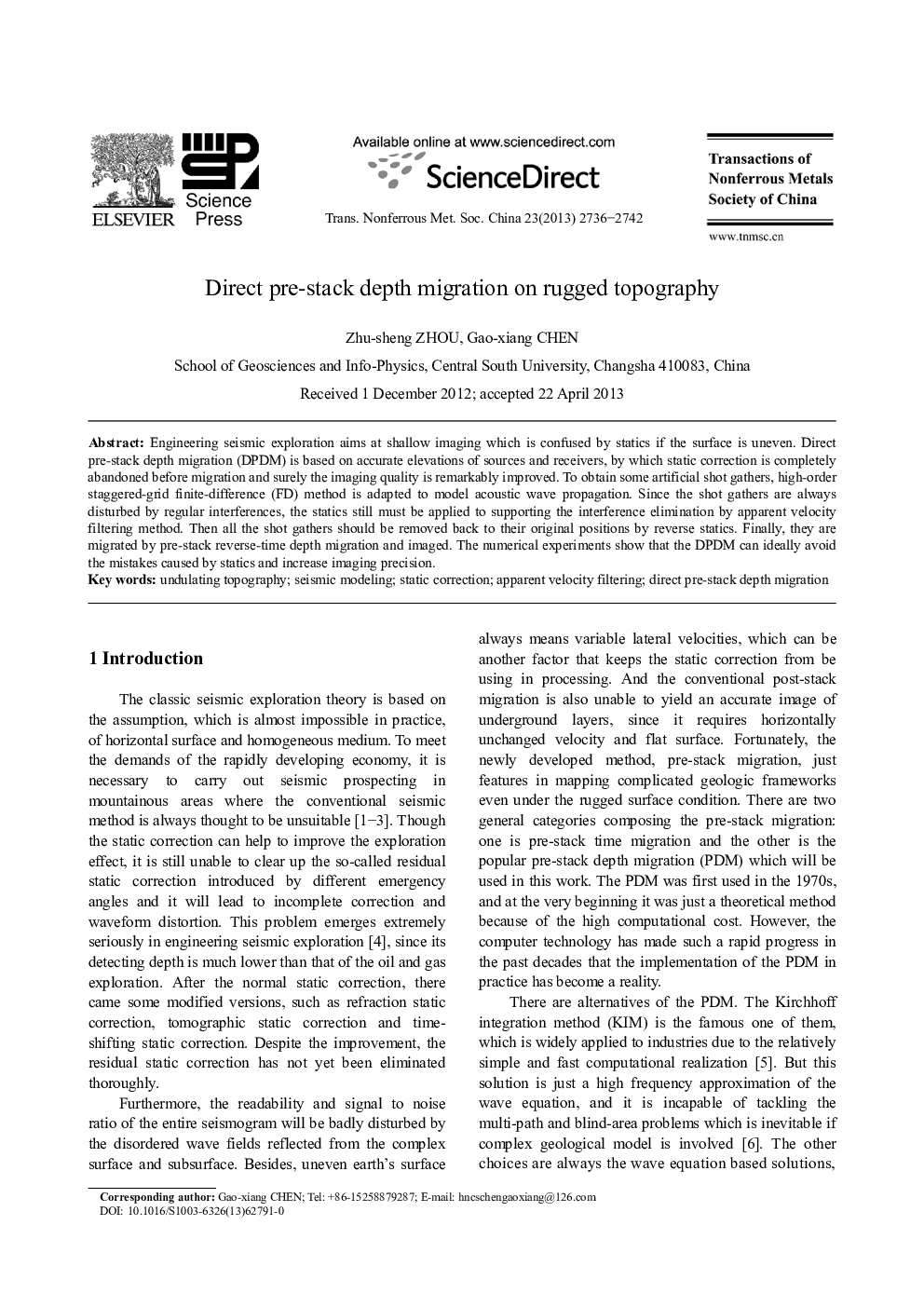| Article ID | Journal | Published Year | Pages | File Type |
|---|---|---|---|---|
| 1636363 | Transactions of Nonferrous Metals Society of China | 2013 | 7 Pages |
Engineering seismic exploration aims at shallow imaging which is confused by statics if the surface is uneven. Direct pre-stack depth migration (DPDM) is based on accurate elevations of sources and receivers, by which static correction is completely abandoned before migration and surely the imaging quality is remarkably improved. To obtain some artificial shot gathers, high-order staggered-grid finite-difference (FD) method is adapted to model acoustic wave propagation. Since the shot gathers are always disturbed by regular interferences, the statics still must be applied to supporting the interference elimination by apparent velocity filtering method. Then all the shot gathers should be removed back to their original positions by reverse statics. Finally, they are migrated by pre-stack reverse-time depth migration and imaged. The numerical experiments show that the DPDM can ideally avoid the mistakes caused by statics and increase imaging precision.
